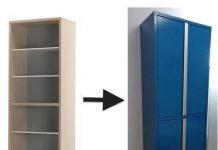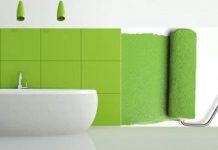![Microcement to renovate your home [GUÍA PRÁCTICA]](https://uluvi.com/wp-content/uploads/2022/07/Microcement-to-renovate-your-home-GUIA-PRACTICA-696x467.jpg)
Would you like to renovate the tiles and floors of your home, but do not want to get involved in major works? There is a material that will help you achieve this: microcement. It is ideal for both indoors and outdoors and fits like a glove on floors, walls, stairs and even furniture. With this guide you will learn all the possibilities of microcement to renovate your home.
Microcement is a very flexible and highly adherent material that can be applied on vertical and horizontal surfaces. To do this, you just have to place it directly on the existing coating: tiles, terrazzo, plaster, marble… In this way, you can renovate your home with hardly any debris, since you do not have to remove the old coating.
This construction material is made up of cement, water-based resins, additives, and mineral pigments that provide a contemporary look as it does not have joints. In addition, once applied it is only 2 or 3 millimeters thick.
Microcement also stands out for its decorative possibilities. There is a wide variety of colors, textures (coarse, medium or fine) and finishes with varnishes and metallic coatings.

How to renovate your home with microcement
Using microcement to renovate your home is an excellent option since it is a decorative coating that survives trends and fads. Thanks to it, continuous spaces can be created without joints that provide a feeling of spaciousness. In addition, the application possibilities of this material are numerous:
- Walls, ceilings and plasterboard
- tile and floor tiles
- Shower trays, sinks and basins
- Granite, Marble and Formica Countertops
- metal surfaces
- Medium density boards (MDF), doors, furniture…
- Outdoors on concrete, cement and wet areas such as swimming pools
If we focus on the two rooms that are most often reformed in a home, microcement offers us a multitude of decorative possibilities.
Microcement in the kitchen
One of the main advantages of microcement in the kitchen is that it can be applied to floors, tiled walls, kitchen countertops and even over the sink.
To renew the floor, it is a material that is resistant to the wear of time, the impact of blows and traffic. In addition, as its thickness is a couple of millimeters, it can be applied without the need to lower doors and without creating a step where it meets other materials.
It is also ideal for covering kitchen tiles, walls and countertops, as it resists scratches, abrasion and heat, as well as splashes and stains. Don’t hesitate to apply it to merge countertop and sink if you want to obtain an avant-garde and elegant result.
On the other hand, the versatility of microcement makes it adapt to any decorative style:
- Minimalist: the absence of joints and the sense of continuity of this material adapts to the straight and simple lines that characterize this style.
- Nordic: a microcement in light shades combined with other materials such as wood, will help make the kitchen appear larger and enhance natural light.
- Industrial: with the combination of microcement in shades of gray and black, an urban aesthetic can be obtained.
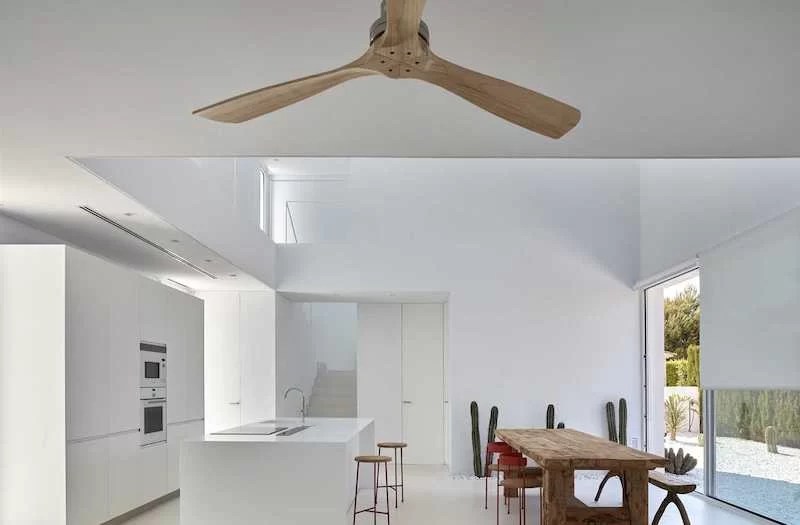
Microcement in the bathroom
Just like in the kitchen, renovate your bathroom with microcement It is a safe bet, since it is also a moisture resistant material that can be applied on:
- Tiles and flooring to forget about those old-fashioned tiles
- Bath and shower, bearing in mind that they must have a non-slip finish to prevent slipping
- Countertop and sink to create a single piece with a modern and elegant aesthetic
- Shelves and furniture to have a functional and decorative storage space
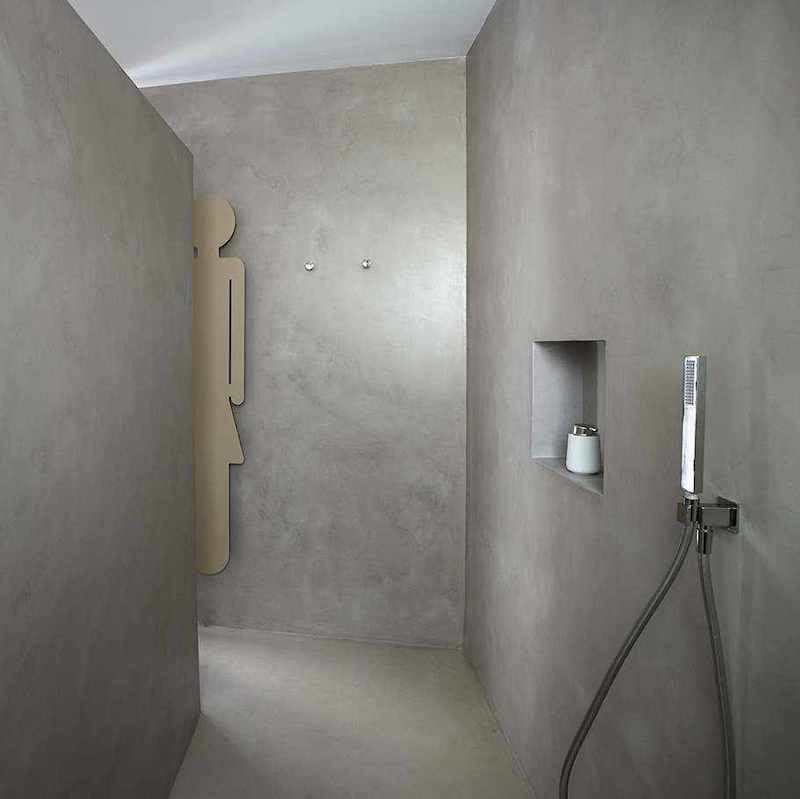
Outdoor microcement
The exterior microcement It is a great option as flooring for terraces and porches. It can also be used as wall and facade cladding.
If your home has a pool, you can also use this material for the surrounding area, since its properties as a non-slip, waterproof and UV-resistant material make it ideal for this use.
Another option is to use it to make benches and planters for your terrace or garden. Microcement construction benches are durable as they do not deteriorate with changes in temperature or with UV rays. In addition, they require little maintenance.
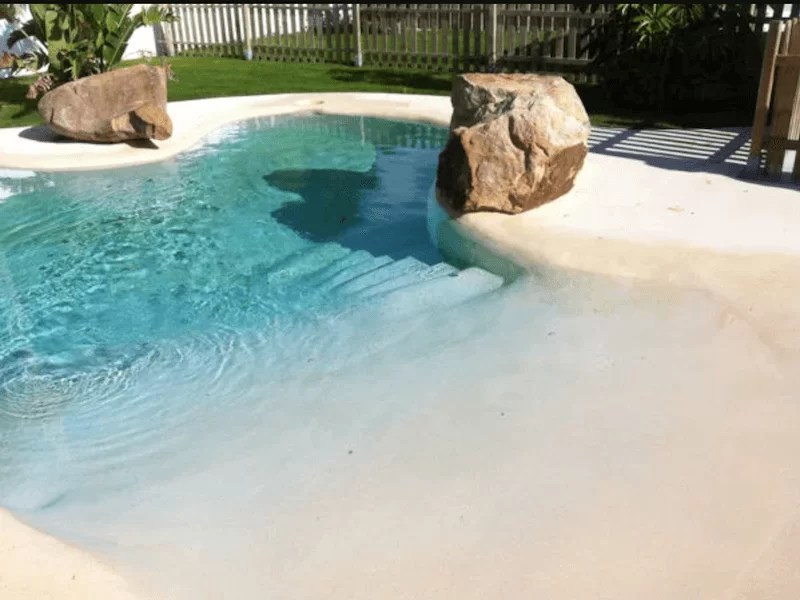
Advantages and disadvantages of renovating your home with microcement
Ultimately, the main advantages of microcement when renovating your home can be summarized in:
- Multi-surface: it can be applied to practically any surface without the need to remove it previously and adding only 2 or 3 millimeters of thickness.
- Clean installation: with microcement no debris is generated because the old coating does not have to be removed.
- Versatile: It can be applied both indoors and outdoors and adapts to vertical, horizontal, rectangular or curved surfaces.
- Resistant: withstands mechanical force, abrasion and the effect of ultraviolet rays.
- Easy cleaning and maintenance: with water and neutral soap you will ensure that the microcement is always like the first day.
- High decorative value: the mixture of different types of color pigments and finishes offers unlimited combinations that will make your home unique and unrepeatable.
On the other hand, more than disadvantages, a series of considerations must be taken into account when applying this material:
- If the surface is damaged or uneven, a reinforcing mesh must be placed before the microcement layer.
- It must be applied by a qualified professional to guarantee a good result. Otherwise, damage such as fissures, cracks, bubbles, stains, etc. may arise.
- Not all types of microcement have the same quality and this will affect the final result. Always choose a manufacturer with guarantees.
Finally, it should be noted that the only material on which microcement is not recommended is wood, since the structural movements of this material could cause cracks in the microcement.

I hope this practical guide has helped you to know the possibilities of microcement to renovate your home and give it a much more up-to-date look. Do not forget that you will find many more guides on homemade DIY and practical decoration at
Images: Topciment

